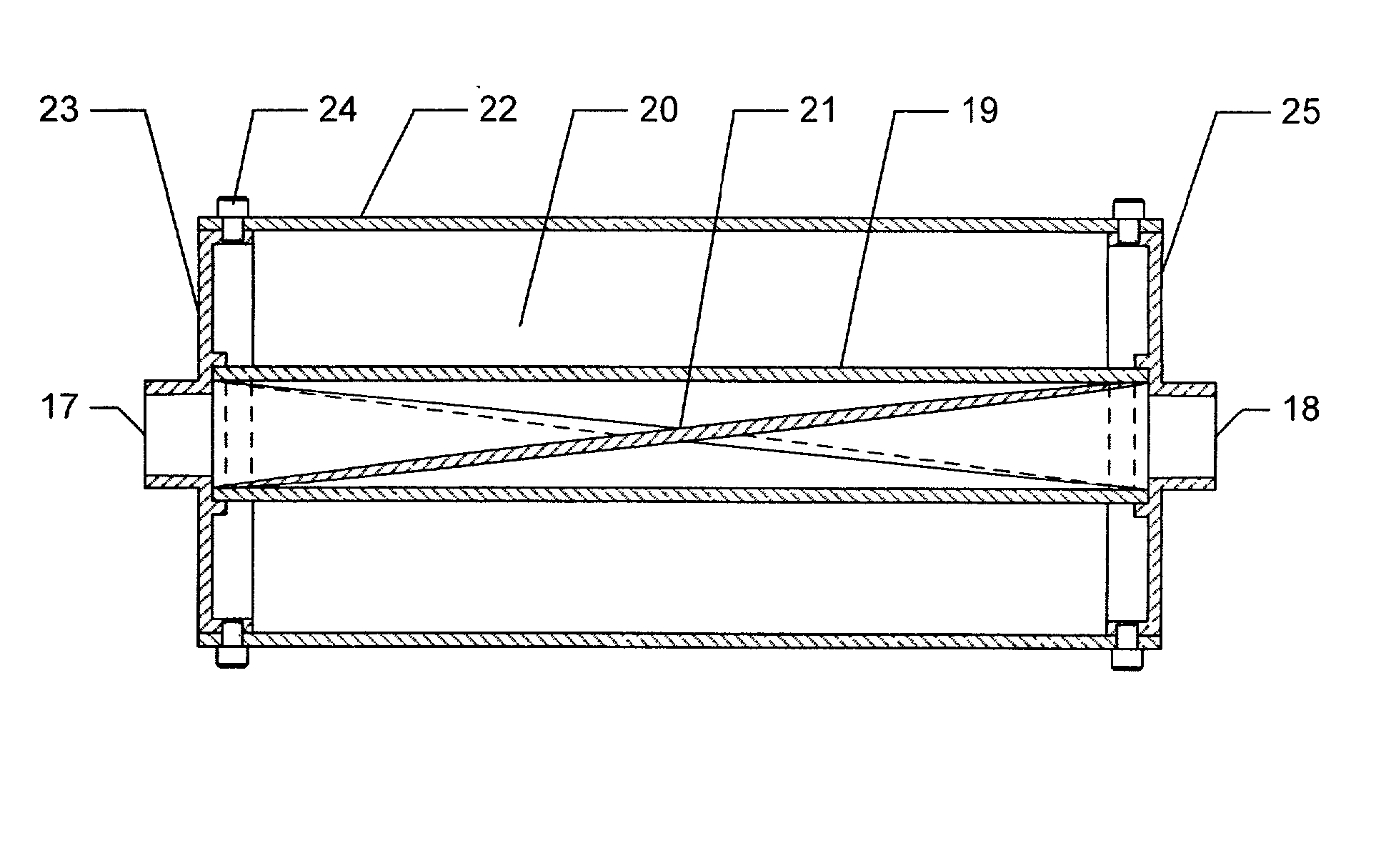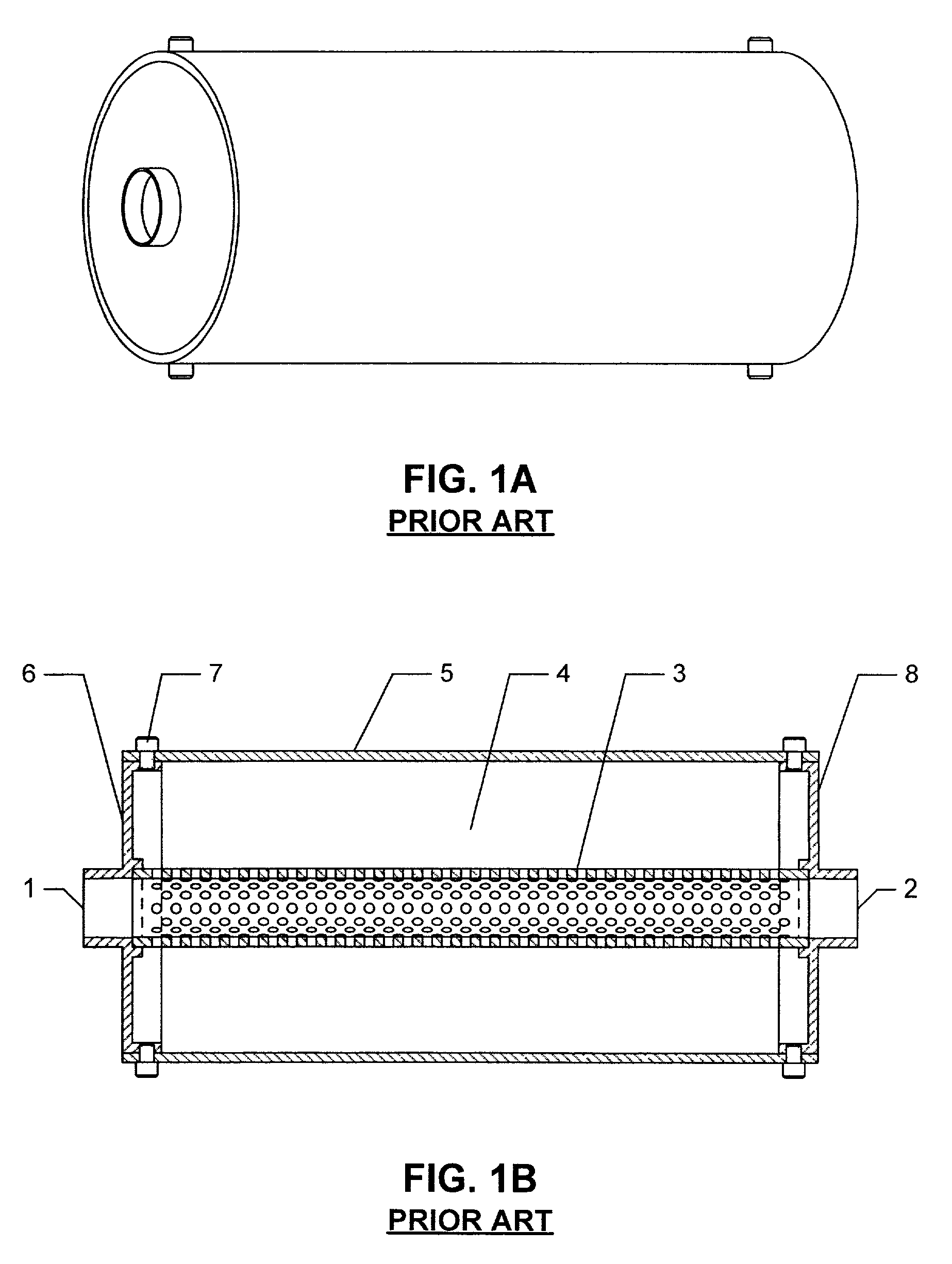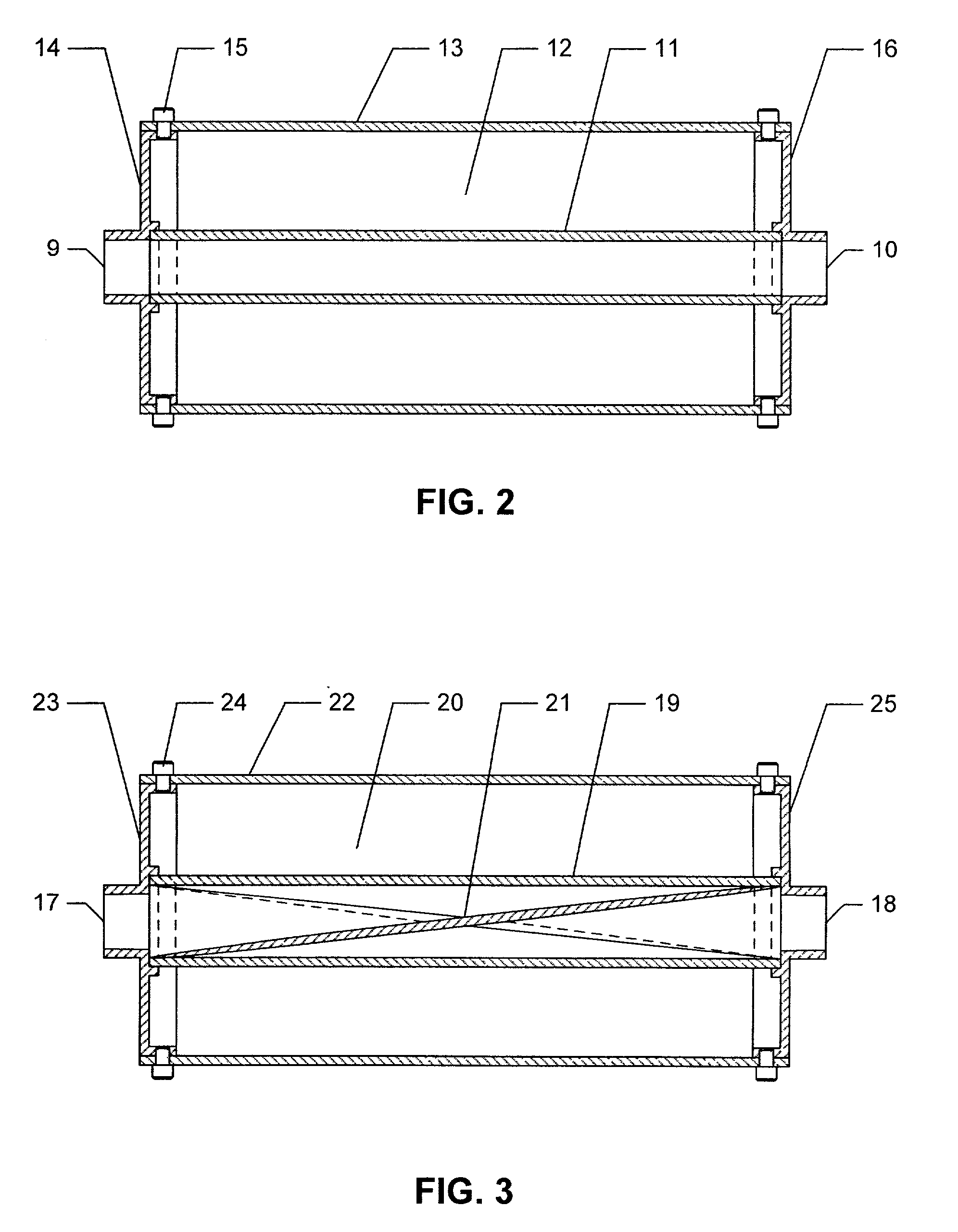Method and apparatus for improved noise attenuation in a dissipative internal combustion engine exhaust muffler
a technology of internal combustion engine and noise attenuation, which is applied in the direction of mechanical equipment, engines, machines/engines, etc., can solve the problems of entrain or "blow out" problem, create and cause turbulence and static pressure loss
- Summary
- Abstract
- Description
- Claims
- Application Information
AI Technical Summary
Problems solved by technology
Method used
Image
Examples
Embodiment Construction
)
[0044] The present invention relates to mufflers for internal combustion engines. The invention overcomes the problems presented in conventional known mufflers through an innovative incorporation of specially configured elements, including components composed of metal fiber, or metallic felt, as described herein.
[0045] The primary function of the perforated tube duct in a conventional dissipative muffler is to convey sound waves from the exhaust flow to the surrounding annular chamber, which is filled with acoustically absorptive porous material. By acting as a liner in contact with the porous media (which shall be considered "rigid" as opposed to "flexible" since it is usually compressed between the perforated metal and the chamber wall), the perforated metal also affects the net absorption coefficient of the combination. It is known that such a combination of "resistive screen" and rigid porous media has a high absorption coefficient for mid to high frequencies (i.e., greater tha...
PUM
 Login to View More
Login to View More Abstract
Description
Claims
Application Information
 Login to View More
Login to View More - R&D
- Intellectual Property
- Life Sciences
- Materials
- Tech Scout
- Unparalleled Data Quality
- Higher Quality Content
- 60% Fewer Hallucinations
Browse by: Latest US Patents, China's latest patents, Technical Efficacy Thesaurus, Application Domain, Technology Topic, Popular Technical Reports.
© 2025 PatSnap. All rights reserved.Legal|Privacy policy|Modern Slavery Act Transparency Statement|Sitemap|About US| Contact US: help@patsnap.com



